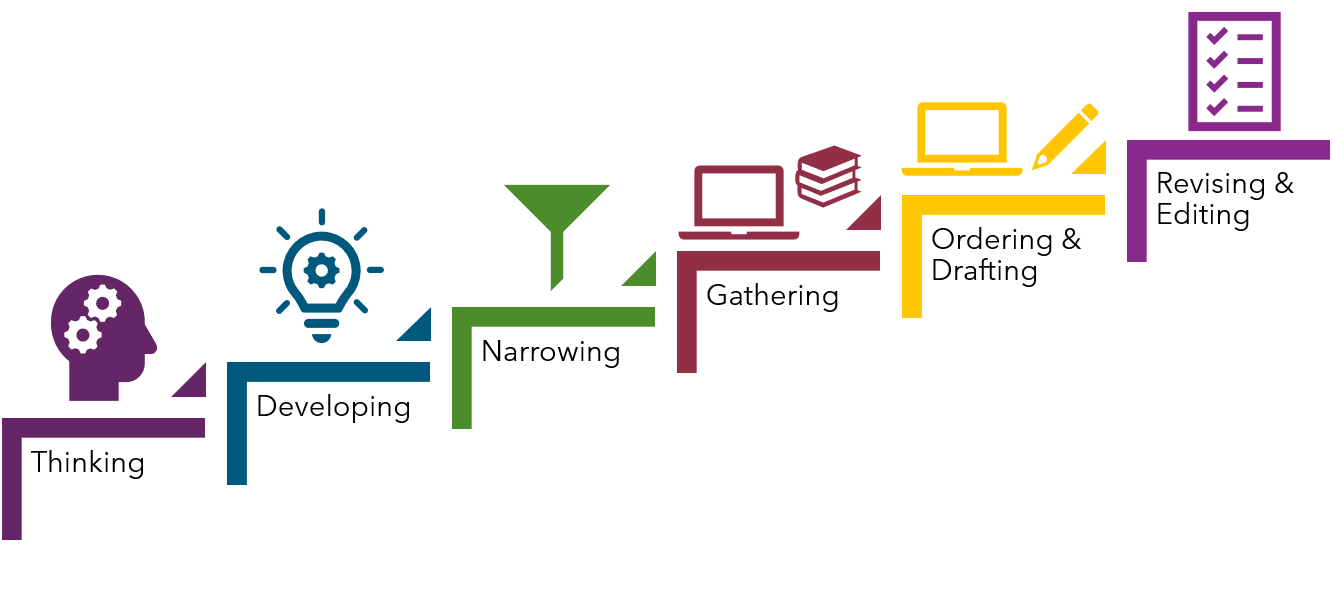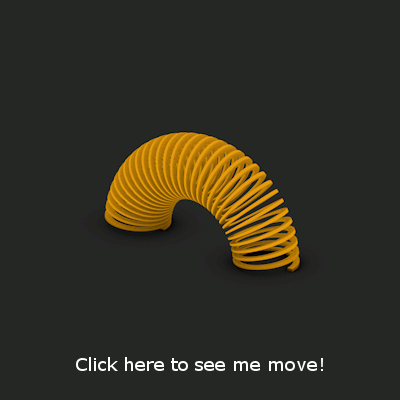Do you know what a Slinky® is?
It’s a toy that can serve as a metaphor for the writing process.
A Slinky is one piece of material that’s coiled in many loops. Writing is a large process that’s made up of smaller ones—processes that connect and loop around each other.
A Slinky, after the first nudge, travels down stairs on its own, step by step. An experienced writer, after the first nudge of an idea or observation, moves through the writing process step by step, with the option to loop back up the stairs as well as down.
Okay, that’s as far as the metaphor stretches (and yes, that’s a bad pun). But you get the idea through the visual example. Writing is a process.
Writing is the tangible result of thinking. And learning how to think—how to develop your own ideas and concepts—is the purpose of a college education. Even though the end result of writing is a product, writing itself is a process through which you ask questions; create, develop, hone, and organize ideas; argue a point; search for evidence to support your ideas…and so on. The point here is that writing really involves creative and critical thinking processes. Like any creative process, it often starts in a jumble as you develop, sort, and sift through ideas. But it doesn’t need to stay in disarray. Your writing will gain direction as you start examining those ideas. It just doesn’t happen all at once. Writing is a process that happens over time. And like any process, there are certain steps or stages.
These are some of the major stages in a strong writing process:

- Thinking about your assignment
- Developing ideas (often called prewriting)
- Narrowing a topic
- Gathering information
- Ordering and drafting
- Revising and editing
On the following pages, we break down each step in the writing process. Click ‘Next’ to continue.

